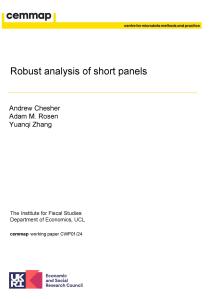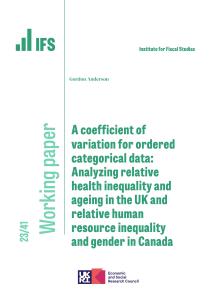<p>Estimation of heteroskedasticity and autocorrelation consistent covariance matrices (HACs) is a well established problem in time series. Results have been established under a variety of weak conditions on temporal dependence and heterogeneity that allow one to conduct inference on a variety of statistics, see Newey and West (1987), Hansen (1992), de Jong and Davidson (2000), and Robinson (2004). Indeed there is an extensive literature on automating these procedures starting with Andrews (1991). Alternative methods for conducting inference include the bootstrap for which there is also now a very active research program in time series especially, see Lahiri (2003) for an overview. One convenient method for time series is the subsampling approach of Politis, Romano, andWolf (1999). This method was used by Linton, Maasoumi, andWhang (2003) (henceforth LMW) in the context of testing for stochastic dominance. This paper is concerned with the practical problem of conducting inference in a vector time series setting when the data is unbalanced or incomplete. In this case, one can work only with the common sample, to which a standard HAC/bootstrap theory applies, but at the expense of throwing away data and perhaps losing effciency. An alternative is to use some sort of imputation method, but this requires additional modelling assumptions, which we would rather avoid.1 We show how the sampling theory changes and how to modify the resampling algorithms to accommodate the problem of missing data. We also discuss effciency and power. Unbalanced data of the type we consider are quite common in financial panel data, see for example Connor and Korajczyk (1993). These data also occur in cross-country studies.</p>







